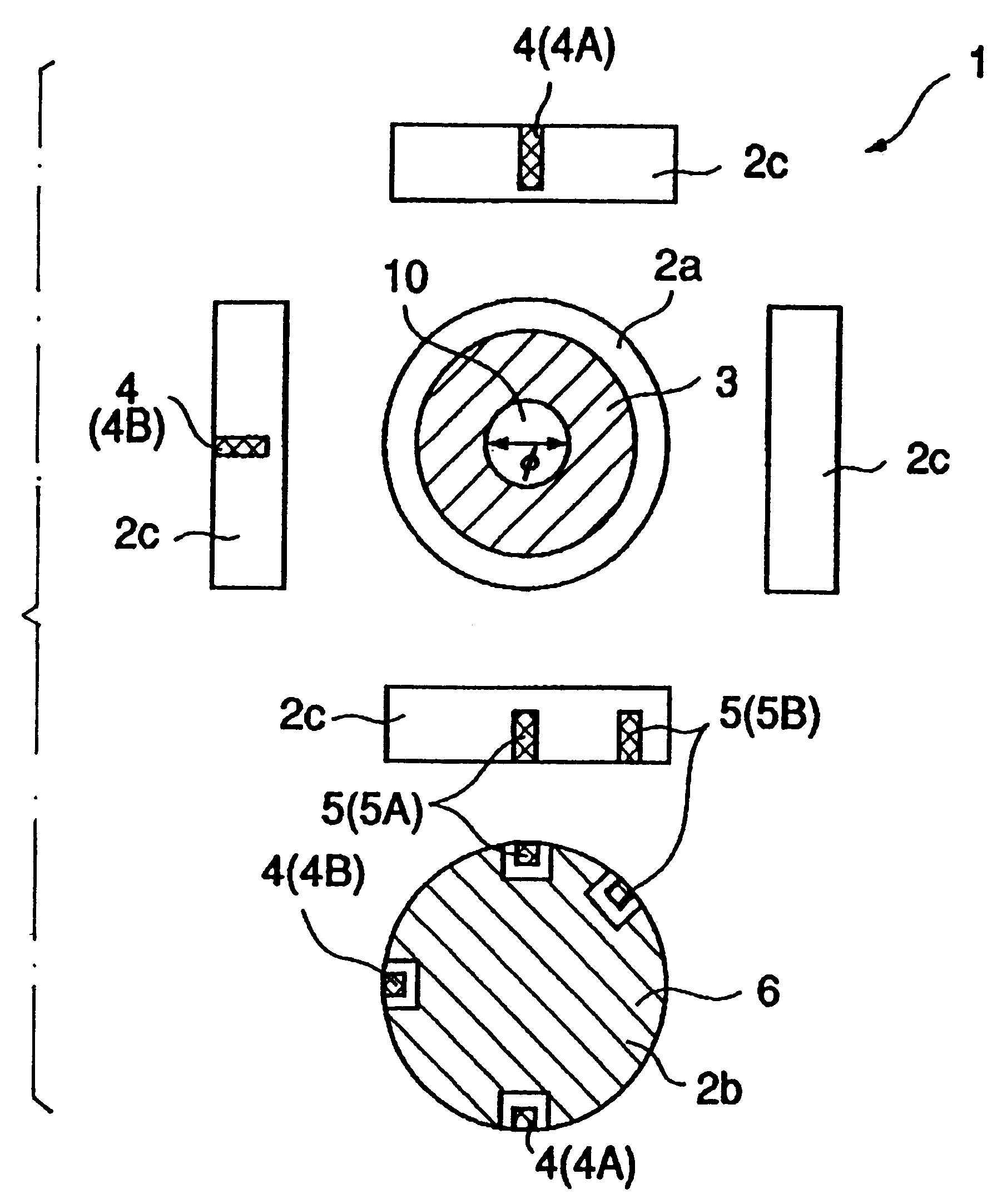Circularly polarized wave antenna and device using the same
a technology of circular polarization and antenna, which is applied in the structural form of the antenna, the structure of the radiating element, and the support/mounting of the antenna, etc., can solve the problems of increasing the size of the antenna, difficult to adjust and set the interval between the respective resonance frequency in the fundamental and higher modes, and complex structure of the antenna 30
- Summary
- Abstract
- Description
- Claims
- Application Information
AI Technical Summary
Benefits of technology
Problems solved by technology
Method used
Image
Examples
first embodiment
FIG. 1A is a perspective view schematically showing a circularly polarized wave antenna according to the present invention. Moreover,
FIG. 1B shows plan views of the circular polarized wave antenna of the above FIG. 1A, taken in the six directions, that is, taken from the upper, under, right, left, front, and back sides thereof, respectively.
As shown in FIGS. 1A and 1B, the circular polarized wave antenna 1 contains a columnar dielectric substrate 2. A circular radiation electrode 3 is formed on the upper face 2a of the dielectric substrate 2. The radiation electrode 3 is formed on the upper face 2a in such a manner that the center of the radiation electrode 3 is positioned on the center axis of the dielectric substrate 2. The distance d between the outer edge of the upper face 2a of the dielectric substrate 2 and the edge of the radiation electrode 3 is substantially constant with respect to the whole peripheral edge of the dielectric substrate 2.
On the side peripheral face 2c of th...
second embodiment
In the second embodiment, the ring-shaped radiation electrode 3 is provided with the center of the ring being positioned on the center axis of the dielectric substrate 2.
The circularly polarized wave antenna 1 of the second embodiment has the same configuration as that of the first embodiment. Thus, needless to say, the antenna 1 of the second embodiment has great advantages comparable to those of the first embodiment. Moreover, in the second embodiment, the radiation electrode 3 is formed in a ring-shape so as to form the non-electrode portion 10. Thus, there are the advantages that adjustment and setting of the interval between the respective resonance frequencies in the fundamental and higher modes can be easily carried out. The reason is as follows. There are differences between the current conduction routes and the current distributions of the fundamental and higher modes in the radiation electrode 3. Owing to these differences, the change amount of the resonance frequency in t...
third embodiment
In the third embodiment, as shown in FIG. 3A or 3B, the cross-section of the dielectric substrate 2, taken along a plane parallel to the upper face 2a has the same circular shape as the non-electrode portion 10, the center of the circular cross-section of the through-hole 12 or the concavity 13 is positioned on the central axis of the dielectric substrate 2, the size of the circular cross-section of the through-hole 12 or the concavity 13 is the same as that of the circular non-electrode portion 10, and the edge of the through-hole 12 or the concavity 13 substantially overlaps with the edge of the non-electrode portion 10.
In the third embodiment, since the radiation electrode 3 is formed in a ring-shape so as to produce the non-electrode portion 10, which is enclosed by the radiation electrode 3 similarly to the second embodiment, the interval between the respective resonance frequencies in the fundamental and higher modes can be easily adjusted and set by adjustment and setting of ...
PUM
 Login to View More
Login to View More Abstract
Description
Claims
Application Information
 Login to View More
Login to View More - R&D
- Intellectual Property
- Life Sciences
- Materials
- Tech Scout
- Unparalleled Data Quality
- Higher Quality Content
- 60% Fewer Hallucinations
Browse by: Latest US Patents, China's latest patents, Technical Efficacy Thesaurus, Application Domain, Technology Topic, Popular Technical Reports.
© 2025 PatSnap. All rights reserved.Legal|Privacy policy|Modern Slavery Act Transparency Statement|Sitemap|About US| Contact US: help@patsnap.com



